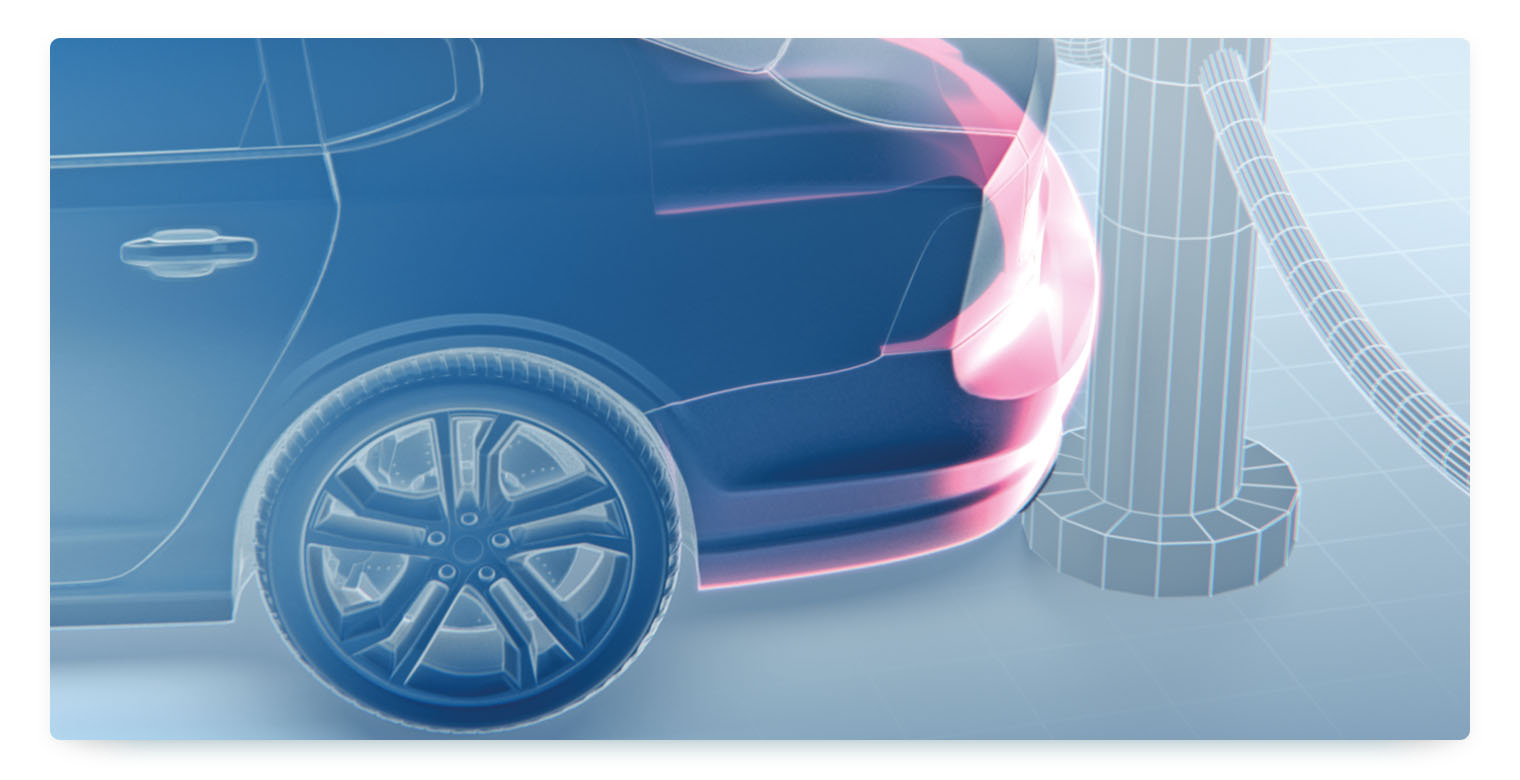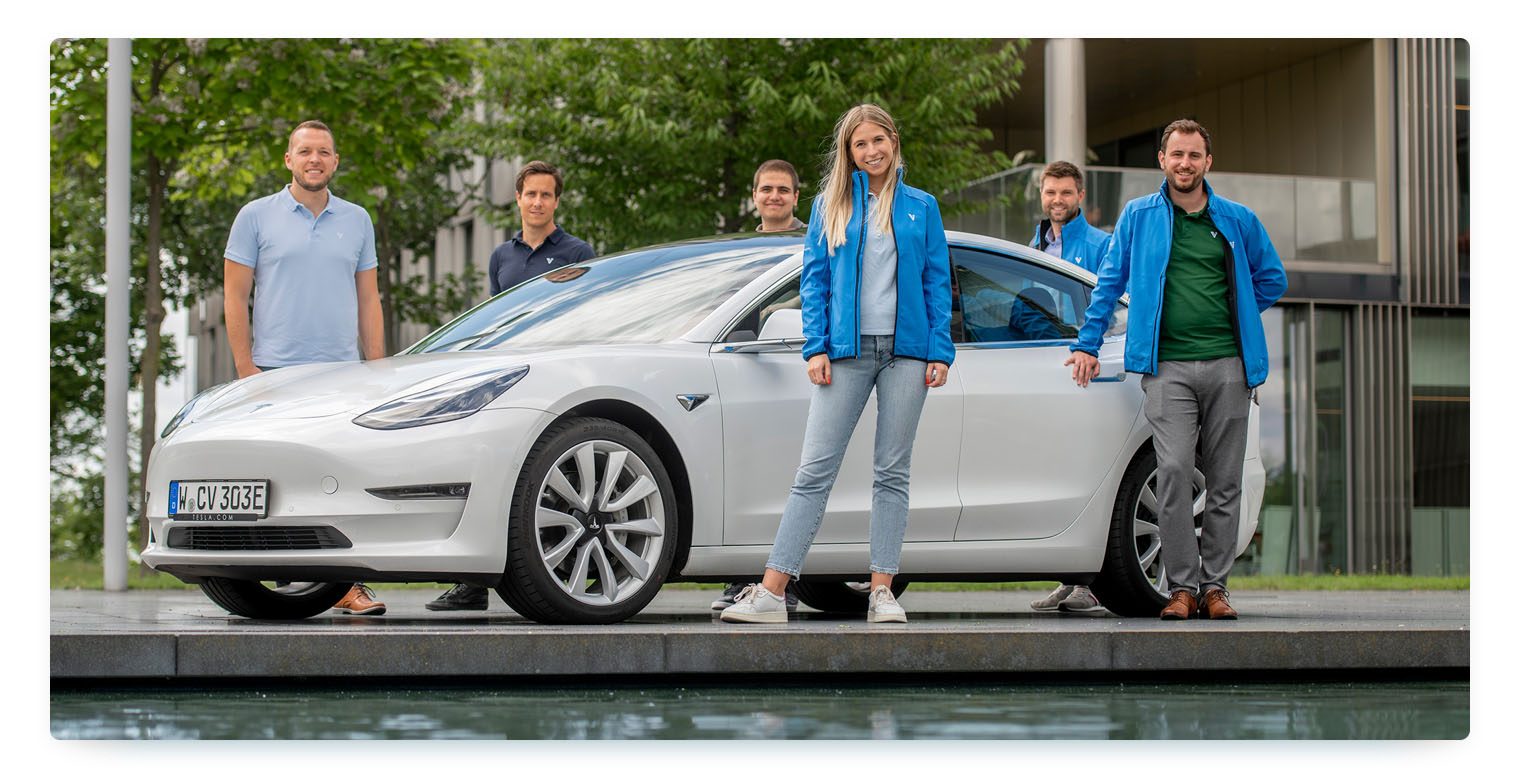
4 min read • April 27, 2025
Damages remain a challenge as well as a cost factor for carsharing operators. With many different drivers and short trips, allocating damage to the responsible driver isn’t easy. AI-based damage detection services promise a solution: We spoke with Nils Bertels from carvaloo about their technology and how operators can benefit from it.
Market

carvaloo is a German tech company specializing in machine learning and automotive AI-technology. Since 2018, carvaloo has been providing the first reliable real-time damage detection to major customers in carsharing, car rental and logistics. Their unique solution analyzes telematics data and is able to accurately identify and report damage based on the recognition of specific motion patterns. carvaloo increases efficiency, trust and safety across all areas of shared mobility and sustainable transport.
Why is damage detection such an important topic for carsharing providers?
Nils: Damage is a real issue: Many carsharing services spend around 10% of their revenue on unclaimed damages. With so many different drivers and frequent short trips, it becomes harder to pinpoint who’s responsible for any given damage. This challenge is bigger in carsharing than in most other mobility sectors. The key to solving this is reliable, real-time damage detection that links incidents to the right driver. Without it, making successful claims—and running a profitable, sustainable carsharing business—becomes much more difficult.
Best practices for damage management →

What distinguishes carvaloo from other damage detection services?
Nils: carvaloo is the only solution that independently manages the entire damage process from the incident to the claim. Motion AI, our smart Feedback System and Image AI collaborate without manual effort to ensure a successful claim.
Unlike purely image-based solutions, which are reliable but cannot always attribute damage to the responsible driver afterward, carvaloo uses vehicle motion data and advanced AI to precisely identify damage in real time. The system then automatically interacts with the responsible driver and collects photos. Image AI finally verifies and specifies the damage, resulting in a claims-ready damage report.
What type of damages can you detect?
Nils: By combining Motion AI and Image AI, carvaloo can detect even minor damage to the body, tires and undercarriage of cars. Hidden damage to the latter is often particularly critical for safety, making AI-based damage detection crucial for carsharing services.
Are there any limitations?
Nils: carvaloo is optimized to detect exterior damage caused by accidents or improper use. In collaboration with our partners at INVERS, we can extend this with a smoke detection service that indicates whether a driver has been smoking in the car. Normal wear and tear or further interior damage — which typically require different types of assessment — are not within the system’s current scope.

What happens if your product detects a damage?
Nils: Following detection, carvaloo independently handles communication with drivers to collect feedback and photos of the damage. An image-based AI then analyzes the photos and compares them with existing damage records. Finally, a comprehensive damage report is generated and sent to the operator, including all relevant details, images, and driver feedback—providing the best possible foundation for a successful claim.
How much active work is needed from a provider to allocate the damage to a booking?
Nils: Virtually none. carvaloo reliably and automatically assigns the damage to a specific booking period.
Does your product work with all types of vehicles and OBUs?
Nils: carvaloo works with all types of passenger cars and is also used in vans and transporter fleets but is not designed for large trucks or buses. We are integrated with a growing number of onboard units (OBUs), which often eliminates the need for additional third-party hardware. As long as the OBU has a sufficiently capable acceleration sensor, technical integration is generally possible.

In May, sharing providers, service partners and market experts will come together at the MOQO Summit 2025 in Aachen to inspire each other, learn from each other and develop new solutions together. Take the opportunity to present your questions and topics and make valuable contacts.